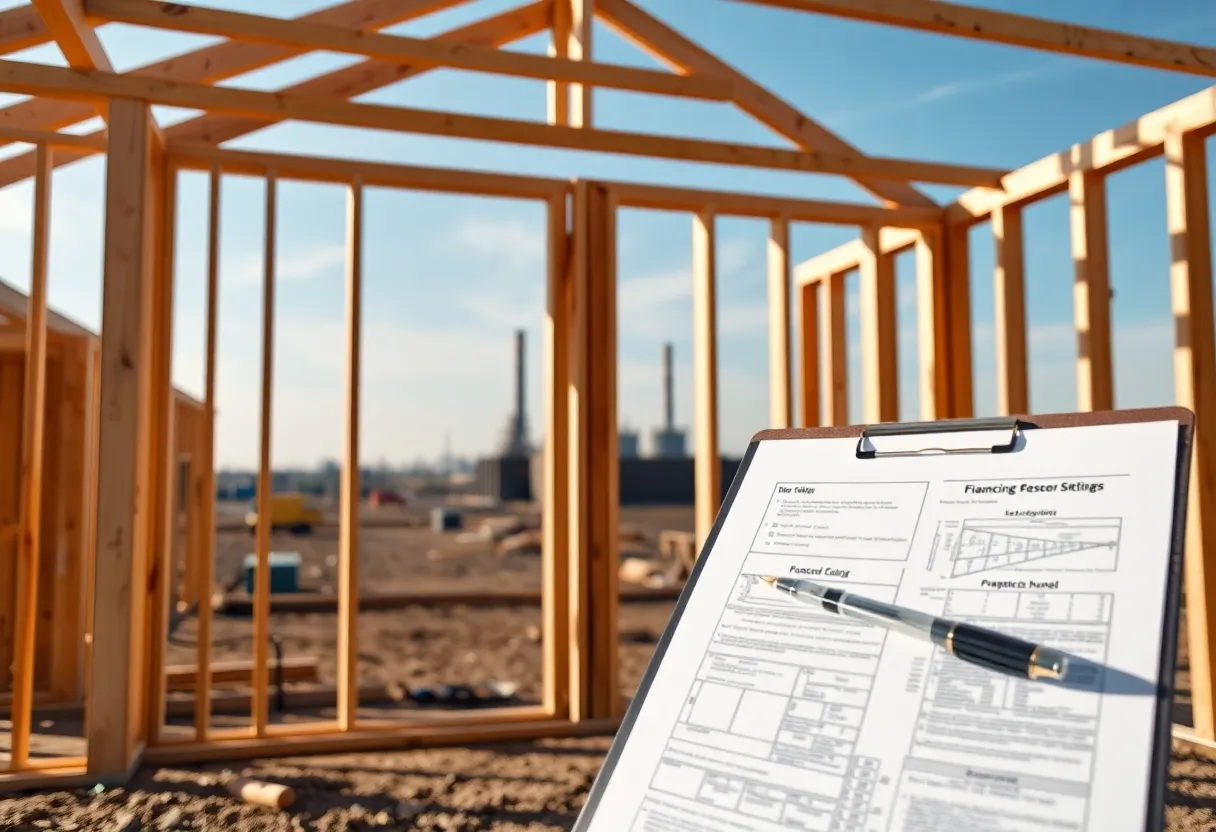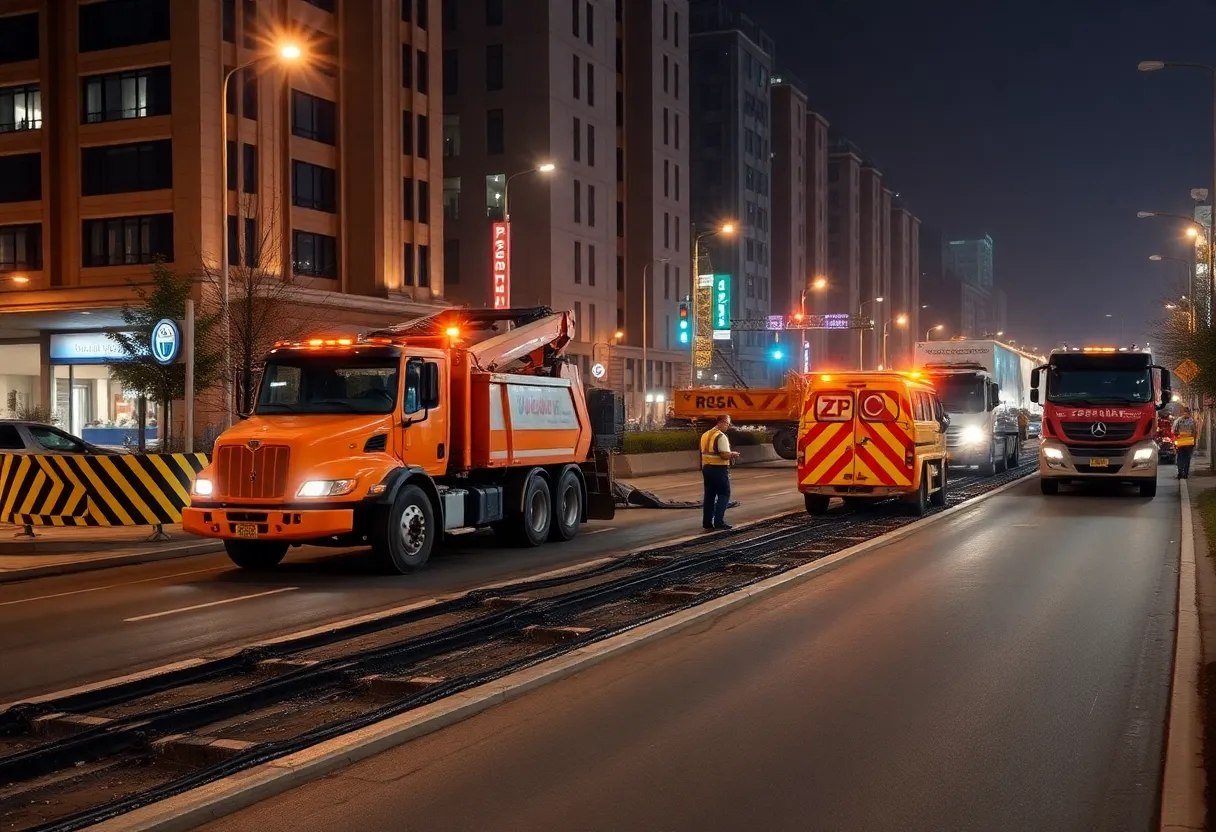Montana, USA, August 26, 2025
News Summary
Mortgage brokers are increasingly pursuing one‑time close construction loans across FHA, VA, USDA and conventional products to serve first‑time buyers and new home builders. The single‑closing structure reduces fallout risk, lowers upfront cash needs, and pays brokers at one permanent close rather than a separate refinance. Meanwhile, a $1.44 billion DOE loan guarantee for a Montana renewable fuels expansion has been unfrozen with an initial $782 million draw, and a regional Montana bank reported solid Q2 earnings driven by loan growth and wider net interest margins. Builders, brokers and buyers must manage documentation and builder approvals to convert inquiries into funded builds.
Mortgage brokers see a fresh opportunity in one‑time close construction loans
Mortgage brokers and loan officers are increasingly being pushed toward construction lending as a way to reach buyers shut out of the resale market by high mortgage rates and tight household budgets. A wholesale lender that offers one‑time close construction loans for FHA, VA, USDA and conventional products says demand is steady, with at least ten new weekly inquiries about construction loans and down‑payment assistance becoming a frequent topic on the lender’s call list.
Why brokers are paying attention
The main draw for brokers is risk reduction and smoother timing. A one‑time close combines construction financing and permanent financing into one closing. That means brokers and originators are paid at the initial closing rather than waiting for a second closing after the home is finished. It also removes the risk that a borrower must requalify at the end of construction, a common problem in the traditional two‑close setup.
From a borrower perspective, the process can look similar to buying an existing home once the builder is approved. Some programs allow no monthly payments during the build, while others require interest‑only payments. For example, certain FHA construction options feature a pause on payments during the construction period, while many conventional construction loans use interest‑only payments until the home is complete. FHA new‑construction loans may require a minimum down payment around 3.5 percent, while VA and USDA construction programs can allow full financing on qualifying projects, enabling a true zero‑down path to a brand‑new home.
Operational realities
Lenders that handle one‑time close construction loans typically maintain an in‑house construction department to coordinate inspections, draws and construction compliance. For brokers, the critical change is having documentation flow to both underwriting and the construction team — a dual process sometimes described as having two dance partners. Training and promotion of construction capabilities may provide a local competitive edge, especially for loan officers willing to learn the mechanics of these programs and work through more complex deals.
Montana Renewables loan unfrozen; Calumet tax and appeal activity continues
A large federal loan guarantee for a renewable fuels expansion in Montana has been returned to active status after a brief pause. The Department of Energy (DOE) guaranteed a facility loan with a principal amount of $1.44 billion, which together with $233 million of capitalized interest brings the total financed figure to about $1.67 billion. An initial draw of roughly $782 million was released to cover eligible expenses already incurred, while the balance remains in a delayed draw construction facility expected to fund work beginning in 2025 and continuing through project completion in 2028.
The project aims to expand sustainable aviation fuel and renewable diesel capacity to about 300 million gallons of SAF and 330 million gallons of combined product annually. The expansion plan includes a second reactor expected to bring roughly half of the SAF capacity online by 2026, along with increased hydrogen production, cogeneration, blending and on‑site water treatment.
The loan had been temporarily paused while federal priorities were reviewed. Officials cited a need to align funding decisions with recent executive guidance and national energy priorities. Company officials proceeded with an additional equity investment of $150 million on hand and expect the remaining loan disbursements during construction.
Local tax appeals and abatement requests
The project owner has filed for a new county tax abatement covering about $6.1 million of equipment installed or placed in service in 2024. That request comes against a backdrop of earlier approvals, pending tax appeals for prior years, and a dispute with state environmental authorities over what portion of the plant qualifies as tax‑exempt pollution control equipment. Hearing dates are in active scheduling discussions at the state tax appeal board.
Regional bank posts solid Q2 financials
A Montana‑based regional bank holding company reported net income of $3.2 million in the second quarter of 2025, equivalent to $0.41 per diluted share and unchanged from the prior quarter. Year‑to‑date net income has roughly doubled compared with the same period last year. The company declared a quarterly cash dividend of $0.145 per share to be paid in early September, reflecting steady capital and earnings.
Key balance sheet and performance items include total assets near $2.14 billion, total deposits of about $1.74 billion, a net interest margin of 3.91% and growth in commercial real estate and agricultural loans. Originations of residential mortgages rose during the quarter, boosting mortgage banking income, even as the bank reported declines in residential construction and overall consumer loan balances. The bank recorded a larger provision for credit losses during the quarter and maintains an allowance that covers nonperforming loans by a wide margin. Management highlighted shifts in deposit mix toward higher‑yield products and noted possible impacts from evolving inflation and trade policy on future interest rates.
What this means for the market
The one‑close construction product and the reactivated federal loan both point to a cross‑section of activity: lenders and brokers seeking growth by serving buyers who can build, and regional industrial investment tied to federal energy priorities. For brokers, the short‑term opportunity is to learn and market construction pathways that reduce friction for borrowers. For communities, the federal loan supports a large industrial expansion with local tax, environmental and infrastructure implications that will play out over the next several years.
FAQ
What is a one‑time close construction loan?
A one‑time close combines construction financing and permanent mortgage financing into a single loan and single closing. Borrowers avoid a second closing, and originators receive payment at that single closing.
How does a one‑time close benefit brokers?
It reduces the risk that the borrower will fail to qualify for a second loan after construction and allows brokers to be paid at closing instead of waiting for a later refinancing event.
Do borrowers make payments while the house is built?
Payment rules vary by program. Some FHA construction paths can pause payments during construction, while many conventional construction loans require interest‑only payments during that period.
What down payment is needed for new construction?
Program rules vary: some FHA new‑construction loans may require around 3.5 percent down, while certain VA and USDA construction options can finance 100 percent for eligible borrowers.
What is the status of the federal loan for the Montana renewable fuels project?
A DOE loan guarantee with about $1.44 billion in principal has resumed funding after a short pause. An initial draw of roughly $782 million was applied to eligible prior expenses, and the remaining funds will be drawn during construction from 2025 through 2028.
What recent bank results matter to local mortgage markets?
A regional bank reported steady net income, higher mortgage originations in the quarter, and an improving net interest margin. These trends can support local mortgage availability and reflect how banks are responding to a higher‑rate environment.
Key features at a glance
| Topic | Key points |
|---|---|
| One‑time close construction loans | Single closing for construction and permanent loan; available for FHA, VA, USDA, conventional; can lower broker risk and consumer closing costs; varied construction payment options. |
| Demand signals | At least ten weekly lender inquiries about construction loans; down‑payment assistance and build‑from‑scratch demand common. |
| Montana Renewables / DOE loan | DOE guaranteed loan with $1.44B principal plus $233M capitalized interest; initial $782M draw released; delayed draw for construction through 2025–2028; aims for 300M gallons SAF capacity. |
| Calumet tax and appeals | New county abatement application for $6.1M of 2024 equipment; pending state tax appeals and DEQ certification dispute over pollution control exemptions. |
| Eagle Bancorp Montana Q2 2025 | Net income $3.2M ($0.41/share); total assets $2.14B; NIM 3.91%; deposits $1.74B; originated $78.6M mortgages; declared $0.145 quarterly dividend. |
Deeper Dive: News & Info About This Topic
Additional Resources
- FuelCellsWorks: Montana Renewables announces closing of $1.44 billion DOE loan facility
- Wikipedia: Sustainable aviation fuel
- GlobeNewswire: Eagle Bancorp Montana Q2 2025 results
- Google Search: Eagle Bancorp Montana Q2 2025 earnings
- GlobeNewswire: Q2 2025 supplemental resource (download)
- Google Scholar: DOE loan guarantee Montana renewable fuels
- The Electric GF: Sen. Daines — $1.44B federal loan to Calumet back on
- Encyclopedia Britannica: Calumet renewable fuels (search)
- REBusinessOnline: Gantry secures $10.5M loan for multifamily community in Montana
- Google News: Gantry multifamily loan Montana





